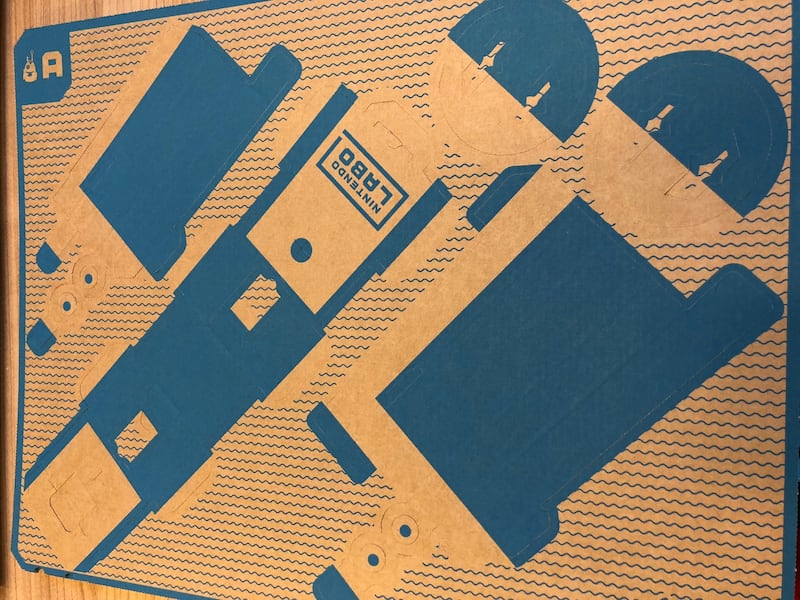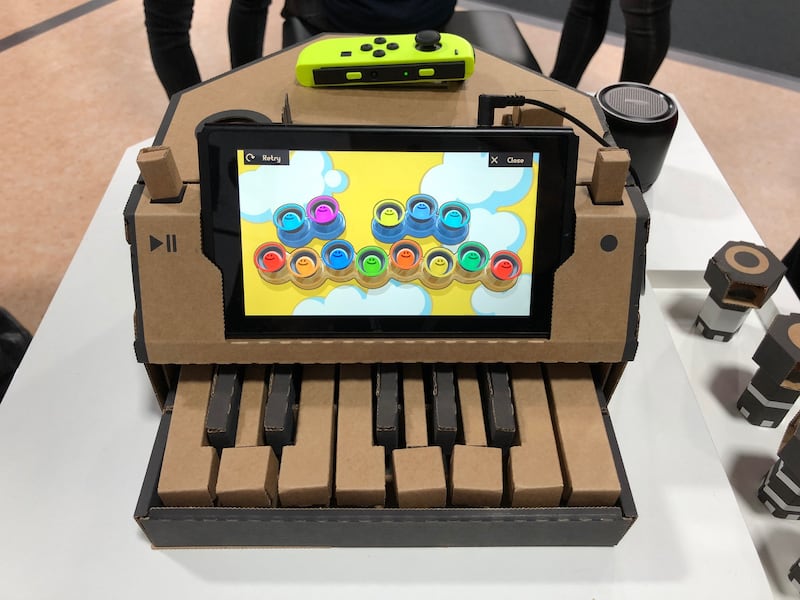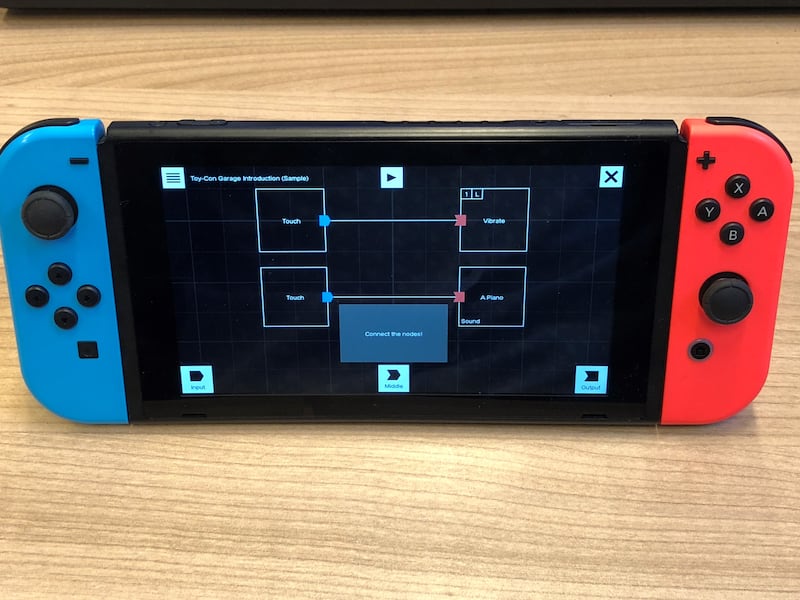The Nintendo Switch is already a runaway success for Nintendo, having cleverly fused home and mobile gaming in one small system.
Now, the Japanese firm has taken an unusual step in its attempts to upgrade and expand the Switch’s versatility – cardboard accessories users build themselves and use to play new games.
They call this Nintendo Labo.
The Switch screen and its removable motion sensitive Joy-Con controllers then bring these designs to life – each of which are known individually as Toy-Cons.
The experience is split into two sets – the Variety and Robot kits – each of which contain a game cartridge for the Switch console and a host of cardboard sheets ready to be assembled into various Toy-Con creations.
At £59.99 for the Variety and £69.99 for the Robot kit, they don’t initially appear tantalisingly cheap, but the basic contents of the box are not how Labo should be measured.

The Variety kit lives up to its name by offering five different Toy-Cons users can build and play dedicated games with: an RC car, fishing rod, house, motorbike and piano, with the Joy-Con controllers and Switch display fitting into the designs in weird and wonderful ways.
The Robot meanwhile is just a single Toy-Con, but is significantly larger – involving a backpack, headset and hand and feet attachments that allow the user to fully control an on-screen robot.
No matter which of the sets you pick up first, the basic process is the same – following the Labo app on the Switch as it guides you through the build process.
The walkthroughs each intricately show how to correctly fold, piece together and ultimately construct each Toy-Con, with all additional material, such as string and elastic bands needed for some structures, all provided in the box.
As an experience it feels straight out of an arts and crafts class in the best possible way, but be warned the building times can be long in some cases (more than 200 minutes).
The instructions though are clear and easy to follow, with users able to speed up or slow down what they see on-screen as they work through the different screens using touch controls.
But the building process is worth savouring for its sheer cleverness. Few other experiences in gaming compare to the assembly of the Labo Toy-Cons – especially the more elaborate designs such as the fishing rod or piano.

Nintendo has done a wonderful job of creating a relationship between its flagship console and a few perforated pieces of cardboard – the way the Joy-Cons fit into each Toy-Con will frequently surprise and delight throughout the building process.
Seeing everything come together, and how the infra-red sensor on the Joy-Con controllers is used to capture movement of parts and translate that into sound and controls on the Switch screen for example, brings with it a sense of wonder that younger players will thrive on, and even older users will admire.
It’s this combination of cutting-edge tech with the basic physics of cardboard, string and elastic bands that makes Labo such an interesting experience to interact with – even before you play the games linked to it.
But that is the point – the play is only a fraction of the key experience here, as Nintendo’s own mantra for Labo after all is “Make. Play. Discover”.
Once completed, the guide app then offers the chance to jump instantly into the game associated with the craft just assembled, putting the Labo and its smart design to the test.
These games are fun if slightly basic – the stars of the show are the fold-up and fit together Toy-Cons.
The fishing rod and motorbike games look and feel very Nintendo – bright, animated visuals and a straightforward premise – while the house and piano offer more of a creativity experience rather than a gaming one.
The third part of the Labo experience is Discover, and it is there where Nintendo has built in tools to aid the longevity of Labo.

The Discover section of the app starts out as a handy guide to playing each of the games linked to an individual Toy-Con – teaching you how to catch fish with the fishing rod for example.
But it quickly expands into the Toy-Con Garage, in essence a coding workshop where users can create their own interaction sequences using the cardboard accessories, the Joy-Con controllers and lights, sounds and vibrations emitted from the Switch console.
It encourages users to think outside the box and build their own cardboard mechanisms that come along – a small amount of spare cardboard is even included in the Variety kit box to help kickstart this process.
This is Labo’s gold mine, and where a lot of its best experiences are likely to be seen in the coming months.
Nintendo has also thought about longevity in terms of keeping the fragile cardboard going – the company has online resources offering individual sheets to repair damaged items, so owners can rest a little easier.
Labo, then, represents a unique piece of entertainment in a modern world of video games, augmented and virtual reality.
It has the basic appeal of manual creation tools such as Lego, but with the added edge of modern technology that the Switch console and Joy-Con controllers bring.
It is an experience that will unite age groups and captivate for hours – Nintendo’s success with the Switch is complete.








